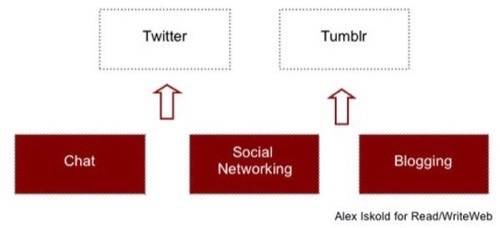Earlier this week we announced our Best BigCo of 2007, Facebook. In this post we’re announcing our pick for Best LittleCo. We’re also asking for your nominations for Most Promising Web Company for 2008.
These picks are something we do every year, this being the 4th year. Last year’s Best LittleCo was YouTube, with Sharpcast selected as Most Promising. In 2005 37Signals was Best LittleCo and Memeorandum (now Techmeme) and Digg were joint Most Promising. In 2004Ludicorp, creators of Flickr, was Best LittleCo and Feedburner was named Most Promising.
As you can see, most of our picks have gone on to enjoy more widespread success – YouTube, Ludicorp, Feedburner have all been acquired; while 37Signals, Techmeme, Digg and Sharpcast have all ramped up and enjoyed success. So to 2007, a year in which trends such as Mobile Web, social networking and micro-blogging have increased in popularity. It’s been another bumper year of startup activity, so which among the hundreds of startups has impressed the most in 2007?
And the Winner is…
As with the BigCo selection, the Read/WriteWeb authors were unanimous in our decision. The Best LittleCo of 2007 is Twitter, Inc. Already this week there has been a lot of analysis about Twitter, with some people embracing it and others critical. Our own Alex Iskold summed it up well in his post entitled The Evolution of Personal Publishing, when he described Twitter as a kind of mix between social networks and chat. The term for this has come to be know as microblogging. Here is how Alex described it:

“Social network publishing is very terse, blog publishing is verbose. Is there a form of publishing which is on one hand as easy as social networking, but as sequential as regular blogs? Twitter and Tumblr have recently emerged to define this new category of microblogging.”
The simple idea of Twitter is to express what you are doing right now, in 140 characters or less. Admittedly Twitter is still very much a niche, geek activity. Earlier this year I witnessed a fellow Web 2.0 Expo attendee twittering on a mobile phone while walking down a busy San Francisco road with a group of us – and she tripped up and fell. Which kind of sums up Twitter for the early adopter, geek crowd: it is addictive, distracting, and not really necessary.

However RWW did highlight some real-world uses this year – e.g. Amazon uses it to promote its products; and Burmese bloggers used a similar product to Twitter, a lightweight messaging service called CBox, to post very short updates from inside the country.
Twitter is undoubtedly new and disruptive. In a year in which you can count on one hand the number of disruptive Web products (iPhone would be another), Twitter stands out as being something that has captured the imagination and become a new hybrid of chat, social networking and blogging.
One of the most important things Twitter has done is open up an API to outside developers (this is an argument that co-founder Biz Stone made to us in September). According to Twitter, the API has seen such incredible growth, that just months after it was released it is already getting 10 times the traffic of the Twitter web site. For examples, check out our Top 10 Twitter Apps from July; and Marshall Kirkpatrick’s comprehensive RWW Guide to the World’s Most Popular Twitter Clients.
One of Twitter’s cheif rivals, Jaiku, was acquired by Google in October. Other similar products that impressed us this year included (but not limited to): Tumblr, Kyte (a video twitter), Soup, Pownce, and the 10 microblogging tools we reviewed in September.

See Also: Evolution of Communication: From Email to Twitter and Beyond
Nominations? Most Promising Web Company for 2008
So there you have it, Twitter is our Best LittleCo this year. Now we turn our attention to what is the most promising Web product or company for 2008 – and we need your help! Let us know in the comments what is most promising for you, and why. We’ll announce this very soon!










